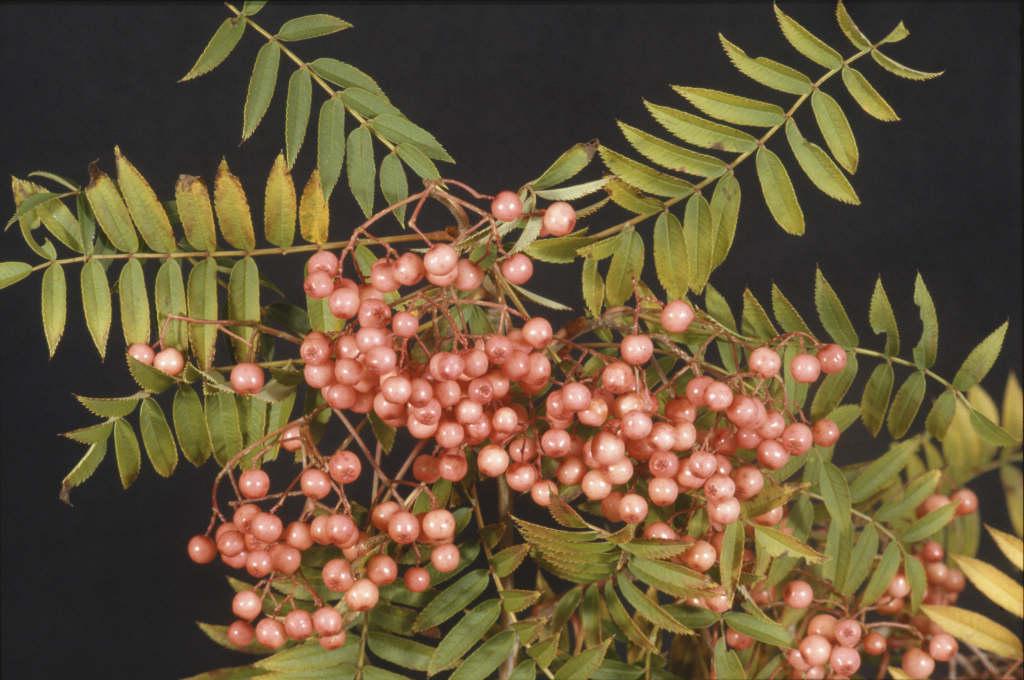Size
Ultimate height
4–8 metresTime to ultimate height
20–50 yearsUltimate spread
2.5–4 metresGrowing conditions
Moisture
Moist but well–drained, Well–drainedpH
Acid, NeutralColour & scent
| Stem | Flower | Foliage | Fruit | |
| Spring | White | Green | ||
|---|---|---|---|---|
| Summer | Green | |||
| Autumn | Orange Purple Red | Pink | ||
| Winter |
Position
- Full sun
- Partial shade
Aspect
East–facing or South–facing or North–facing or West–facing
Exposure
Exposed or Sheltered Hardiness
H6Botanical details
- Family
- Rosaceae
- Native to GB / Ireland
- No
- Foliage
- Deciduous
- Habit
- Bushy
- Potentially harmful
- Fruit are ornamental, not to be eaten. Wear gloves and other protective equipment when handling. Pets: Fruit are ornamental, not to be eaten - see the HTA guide to potentially harmful plants for further information and useful contact numbers
- Genus
Sorbus can be deciduous trees or shrubs with simple or pinnate leaves and clusters of small white or pink flowers, followed by white, yellow, pink, red or brown berries; some have fine autumn colour
- Name status
Accepted
How to grow
Cultivation
Grow in moderately fertile, humus-rich soil. Tolerant of atmospheric pollution; ideal specimen tree in small garden
Propagation
Propagate by softwood cuttings in early summer or chip budding in summer or grafting in winter
Suggested planting locations and garden types
- City and courtyard gardens
- Coastal
- Cottage and informal garden
- Flower borders and beds
Pruning
Pests
May be susceptible to aphids, scale insects, pear blister mite, red spider mite and sawfly larvae
Diseases
May be susceptible to fireblight, apple canker, silver leaf and honey fungus
Get involved
The Royal Horticultural Society is the UK’s leading gardening charity. We aim to enrich everyone’s life through plants, and make the UK a greener and more beautiful place.
